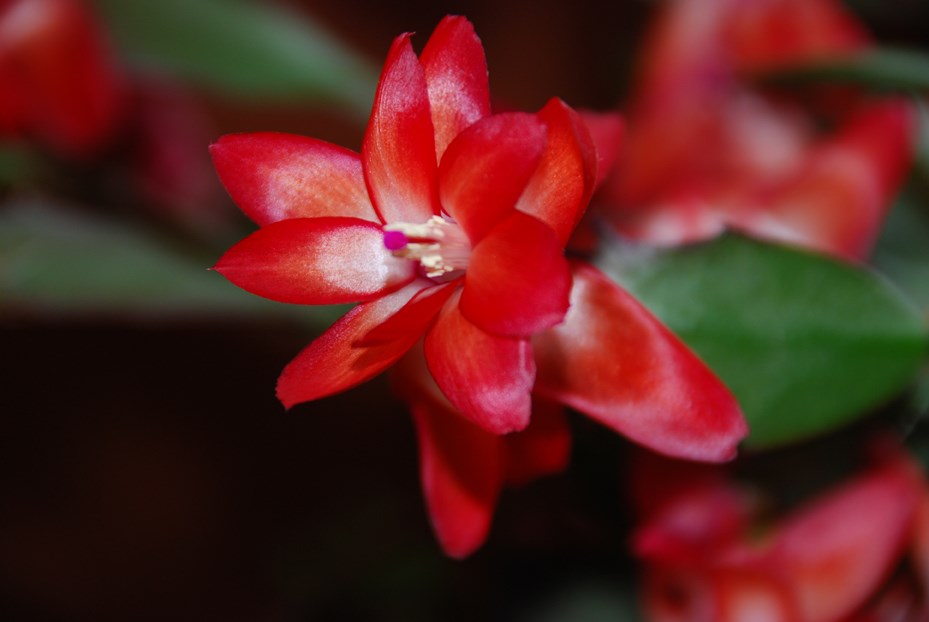When skies are dark and rainy, it's such a treat to see the large and diverse displays of Christmas plants.
Some look similar from year to year, but seldom-offered shades of the spectacular Christmas cactus (Zygocactus truncata) are still showing up in the stores.
In the last couple of years, the ever-popular bright red Zygocactus have been joined by a deep purplish blood-red version. Just before that, the beautiful hybrid “gold charm” appeared in a few stores. This year I failed to resist a lovely, translucent-looking coral-flowered Zygocactus, which flowered once and is now working on a new set of buds.
When these plants are in bud it helps to get them out of the living area into a cooler, more humid situation, at least at night. Hot, dry conditions make buds dry out and then drop.
People with no option, except too-dry and too-warm rooms, will find that misting two or three times a day helps preserve buds.
This is because the natural habitat of Zygocactus is in shady, cool, humid and frost-free conditions. They root in angles and crevices of rocks and moss-covered branches where decayed leaves linger.
The roots are hold-fasts rather than food-gatherers, though it's common practice among houseplant gardeners to fertilize with half or quarter-strength all-purpose fertilizer. Misting the leaves with foliar fertilizer is also beneficial.
It's believed that seed is spread by birds eating the flesh of zygocactus seedheads and excreting seeds onto trees or rocks. But these plants also reproduce by dropping branches. If they fall in a suitable spot, these branches will root. Sometimes just gently brushing by the plant causes amputation.
This is not a disaster – it's an opportunity to turn a small section into a new plant. This cutting can be dried for a week or two. Then the severed end dries out and becomes thick skin which forms roots when it's planted. Small branches two or three inches long (five to seven centimetres) are most successful.
It is important to water Christmas cactus enough to keep the roots gently moist, but they must never stand in water or the roots will rot. That's why they need to grow in a very well-drained mix: usually a one-third mix of peat (or potting soil), sand and grit. Orchid bark (reminding them of their long-lost native trees) can replace either the sand or grit.
With the paler colours, like white and yellow, being in cool conditions can trigger a pinkish tone to the flowers. Once this starts, the pink hue remains even when you bring your plant into a warmer spot.
The newer hybrid forms seem to be more prolific flowerers than the older type zygocactus. It's not uncommon to have a second flowering sometime between spring and the onset of summer.
Left to their own devices, zygocactus usually flower around November. But the heritage Christmas cactus (Schlumbergera x buckleyi) always flowers right on Christmas. It's seldom sold commercially, probably because its gently scalloped branches spread widely, are drooping and hard to pack. Flowers are always pink.
This is one of those plants where cuttings are passed from one friend or neighbour to another. Occasionally, it can be found in garden club plant sales.
Anne Marrison is happy to answer garden questions. Send them to her via [email protected] and include the name of your city.



